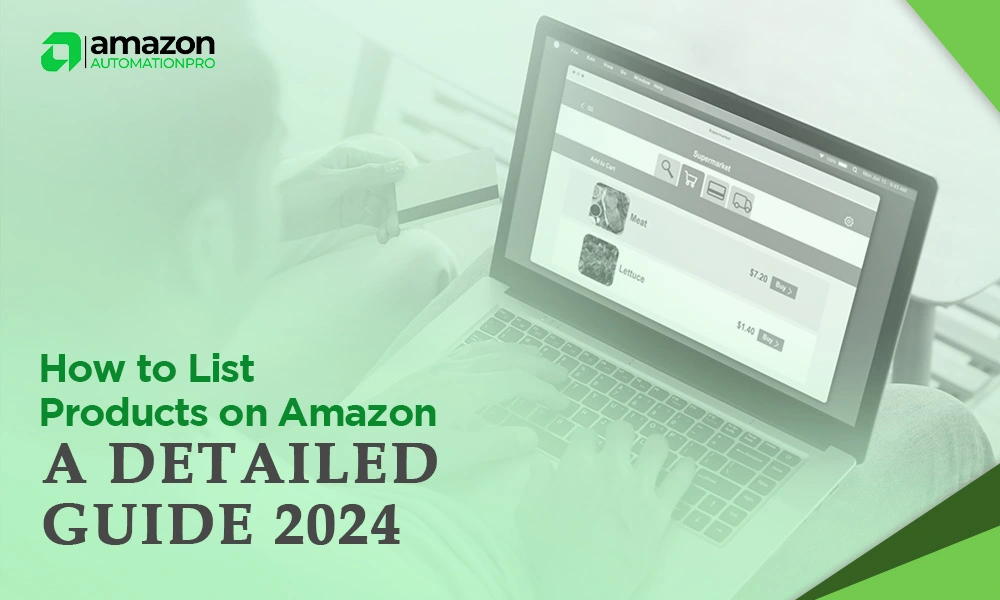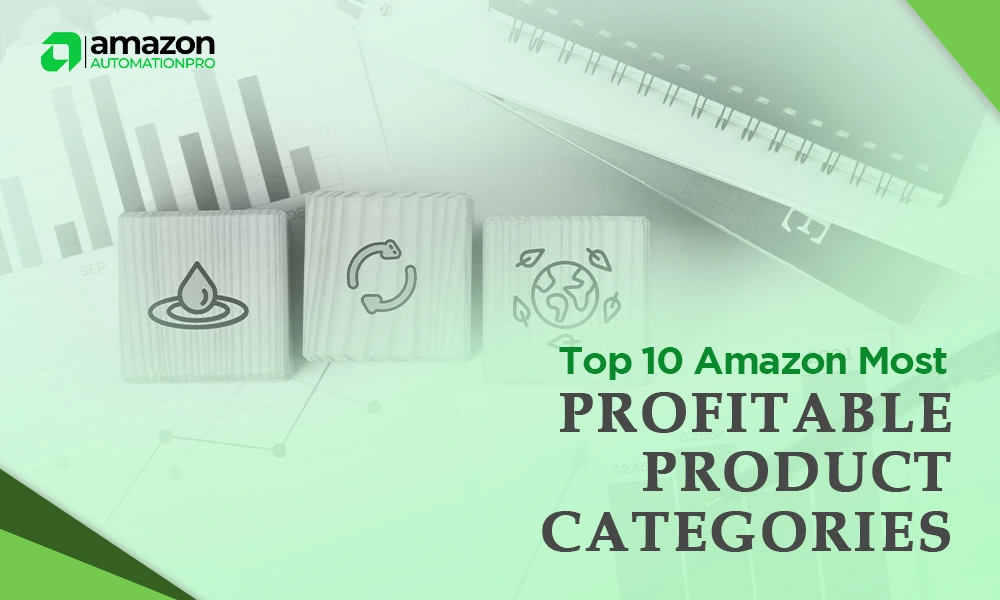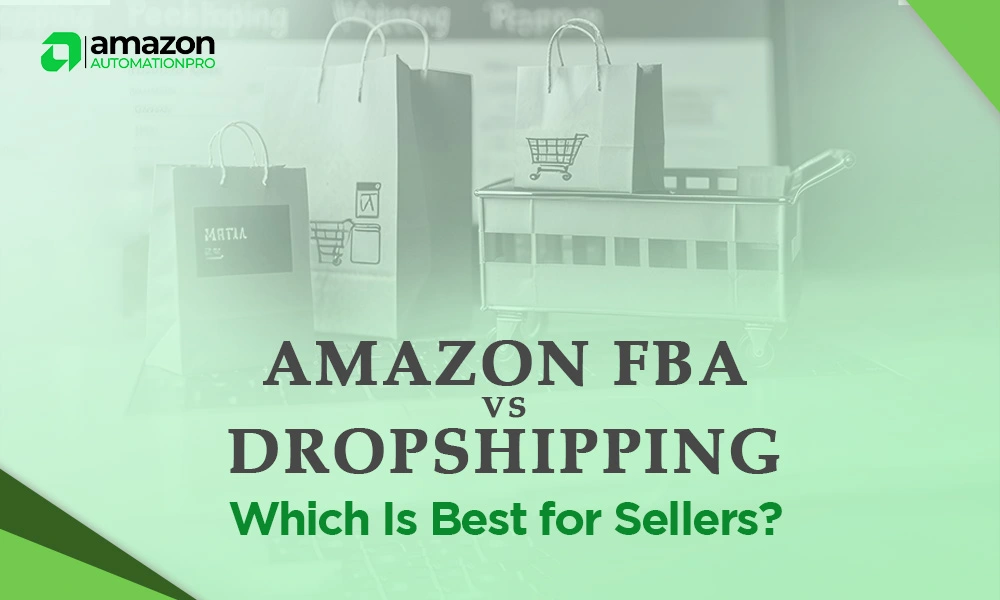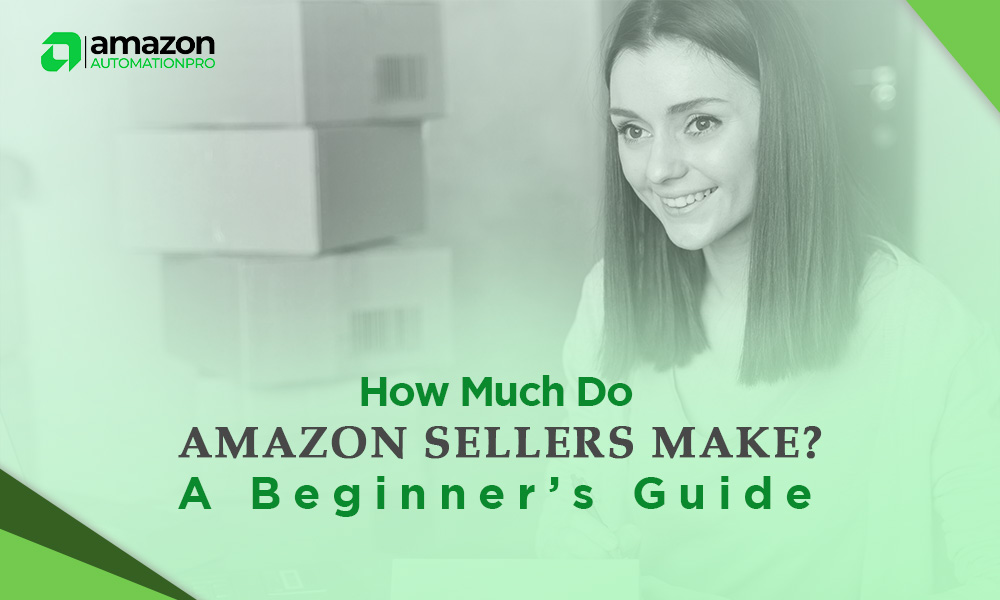If you’re ready to start selling on Amazon, one of the first steps is learning how to list your products effectively. With millions of sellers on the platform, creating an optimized product listing can make all the difference in standing out.
Whether you’re a beginner or looking to refresh your strategy, this detailed guide will walk you through everything you need to know about listing products on Amazon in 2025.
From creating the perfect product title to choosing the right keywords, we’ve got you covered every step of the way.
Table Of Content
- Importance of product listing on Amazon
- Step-by-step process: How to list items on Amazon
- Optimizing your product listing for success
- Managing your product listing
- It’s Wrap
How To Post A Product On Amazon?
Before diving into how to list products on Amazon, you must know the importance of this platform for a successful e-commerce business.
As it is now home to more than 300 million active sellers, this platform is sure to draw in potential buyers in large numbers, making it perfect for sellers.
Whether one is marketing homemade articles, gadgets, or accessories and appliances they need, Amazon is the one-stop shopping hub for millions. And not knowing how to list products on Amazon will be troublesome for you.
Amazon’s selling are its features such as Fulfilled by Amazon which makes shipping easier for sellers. It increases consumers’ confidence through fast delivery. This way, you do not have to worry much about the logistics aspect because Amazon will be able to take care of that for you.
Also, many buyers are worried about how to list products on Amazon and lack confidence in Amazon-fulfilled listings. This step-by-step process will help you get through.
Step-by-Step Process: How To List Items On Amazon
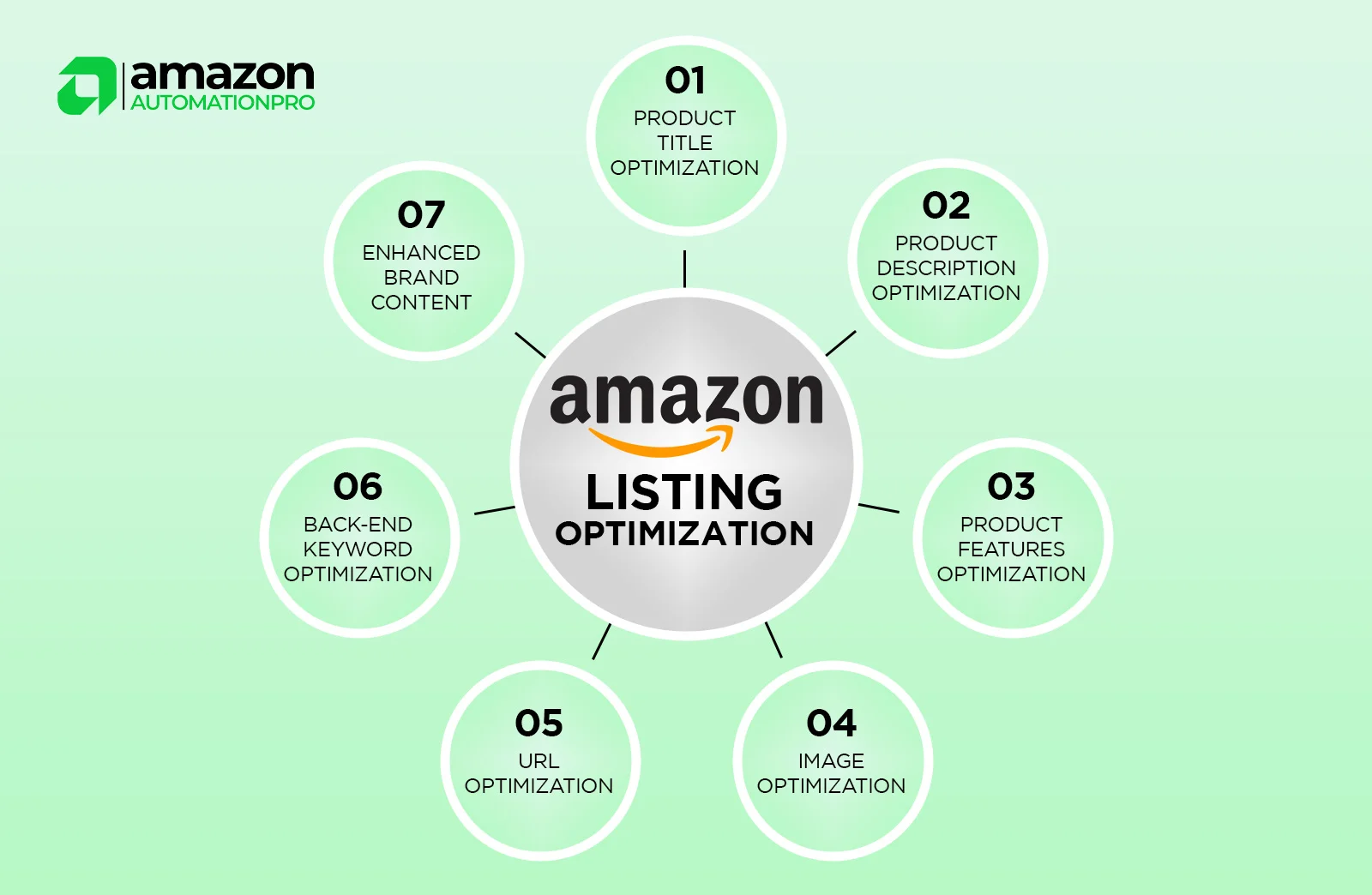
Step 1: Create Your Amazon Seller Account
Before you start listing on Amazon, you need to create a Seller Central account. Here’s how:
- Visit Amazon Seller Central: Head to sellercentral.amazon.com, where you’ll start the registration process.
- Choose a Selling Plan:
- Individual Plan: if you plan to sell fewer than 40 items per month, then this plan is ideal for you. There’s no monthly fee, but Amazon will charge you $0.99 per sale, along with a referral fee (which varies based on your product category).
- Professional Plan: This plan costs $39.99 per month and is ideal if you plan to sell more than 40 items monthly. You won’t be charged the $0.99 per item fee but will still pay referral fees.
- Fill in Your Information: You can begin selling on Amazon by providing your personal and business details, which include your business name, business physical address, phone number, and tax ID. Some of the things that you should make readily available are required during registration.
Step 2: Identify products to sell
Amazon has millions of products in countless categories. The first step in listing on Amazon is figuring out which category your product falls into. This decision will affect how potential buyers find your product and can impact your sales. Some of the popular categories on Amazon include:
- Electronics
- Home and Kitchen
- Clothing, Shoes, and Jewelry
- Beauty & Personal Care
- Sports & Outdoors
Choosing the right category is essential for making sure your product is visible to the right audience. If you’re unsure where your product belongs, take some time to browse through Amazon’s categories to find the one that fits best.
Step 3: Post Your Product on Amazon
Once your seller account is set up and you’ve chosen your product category, it’s time to learn how to post a product on Amazon.
There are two primary ways to list a product:
- List an Existing Product: If the product you’re selling is already on Amazon, you can simply list your version of the item by entering the product’s name or ASIN (Amazon Standard Identification Number) into the search bar. Select the matching product, and Amazon will guide you through adding your listing to the product’s page.
- Create a New Product Listing: If your product is unique or not yet listed on Amazon, you’ll need to create a new listing from scratch. With Amazon listing optimization services, you can fill out all the necessary details to give buyers the information they need.
Step 4: Fill in Product Details
As with any selling platform, when you are listing on Amazon you must ensure that the details you give are accurate and of high quality. Here’s what you’ll need to fill in:
- Product Title: Your product title must be informative, contain keywords and must be directly related to the product or service you are offering. Keep it simple and specific.
- Product Description: This is the part of the plan where you inform future buyers about your invention. What makes it unique? How will it improve the customer’s life? To list features and benefits, you can add bullet points. It will make product descriptions more scannable for shoppers.
- Images: To increase online sales, you not only need to know how to post a product on Amazon, but capturing high-quality images is also important. Upload at least 5-7 images that show your product from different angles, in use, and with any key features highlighted. Make sure the images are clear and professional-looking.
- Keywords: Keywords are the building blocks of Amazon listing optimization. The next ways consist of using keyword research tools to identify the terms that buyers are using when searching for products similar to yours. The listed keywords should be incorporated within your product title, description part, and subheadings/bullet points.
- Price: The price has to be right, or else you will be outcompeted. Check what your competitors, the sellers of similar products, are offering on Amazon to see how you stand with your prices. You wish to be as affordable as possible without compromising the pricing of your product.
Step 5: Choose Your Fulfillment Method
When selling on Amazon, you’ll need to decide how you’re going to get the product to your customers. Here are the main options:
- Fulfillment by Amazon (FBA): With Amazon FBA for beginners, you send your products to Amazon’s warehouses. Amazon then takes care of storage, packaging, shipping, and even customer service for you. FBA is especially beneficial for those who want to focus on scaling their business without worrying about logistics.
- Fulfillment by Merchant (FBM): If you prefer to handle shipping yourself, FBM allows you to control the packing and shipping process. While this gives you more control, it also means you’ll be responsible for all customer service issues and shipping delays.
The best approach is to take the FBA option; this is most advisable for new sellers on the Amazon platform.
Increasing your probability of receiving positive reviews, with some sellers shipping products with Prime-eligible and increasing product exposure through this shipping service. Specifically, Amazon FBA for newbies can be considered one of the primary plans for people starting their journey on the site.
Optimizing Your Amazon Listing for Success
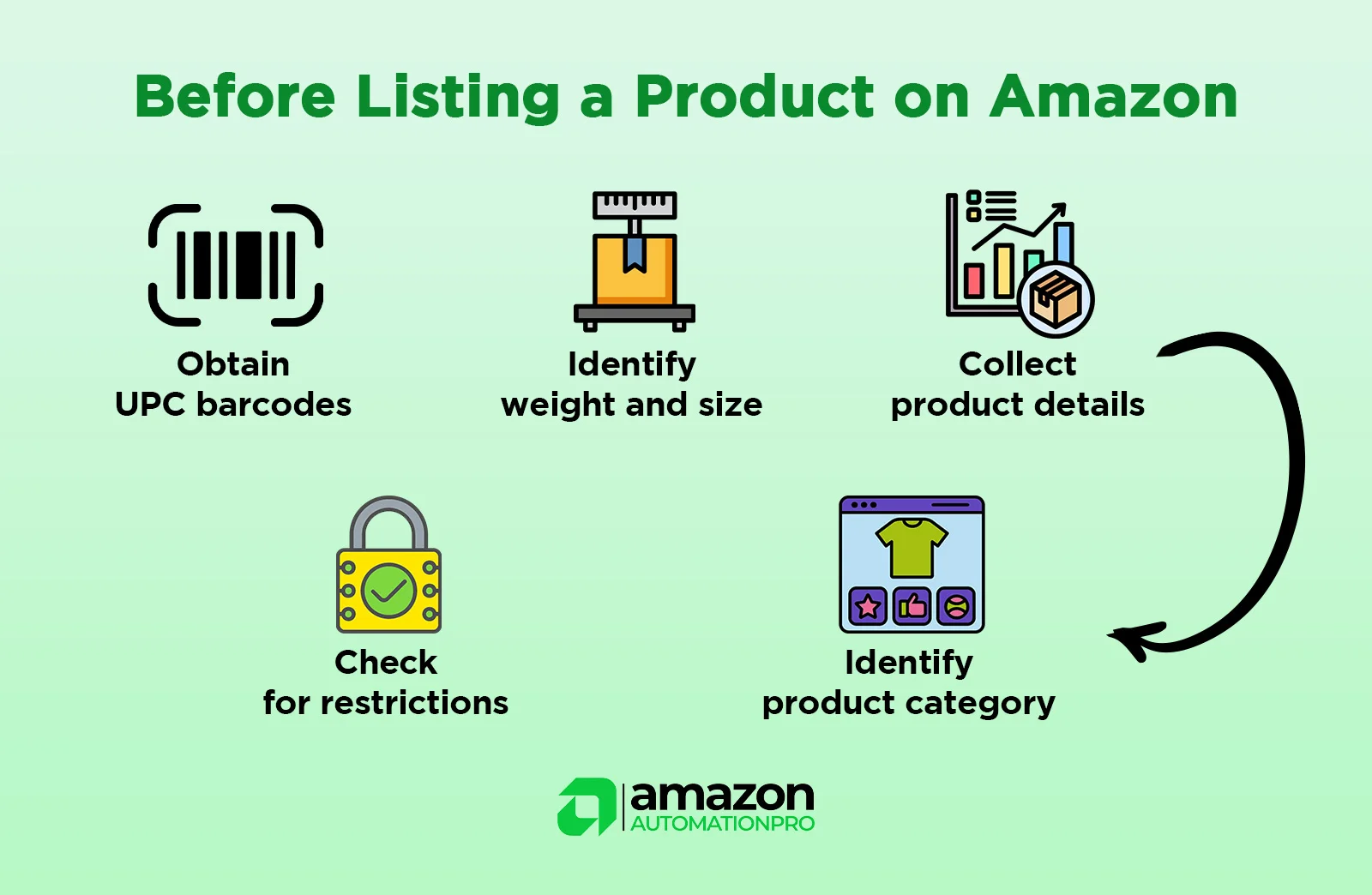
Now that you’ve learned how to list items on Amazon, it’s time to ensure your products rank high in search results. This is where optimization comes into play. Let’s explore how to make your product listing stand out:
Use Relevant Keywords
Amazon is a search engine at heart, and using the right keywords in your title, bullet points, and description is crucial.
Do some keyword research to find out what potential buyers are searching for. This will make your product more discoverable.
Optimize Product Descriptions and Titles
Your product title should clearly describe your item and include high-priority keywords. However, avoid keyword stuffing, as this could make your title less readable. Keep it short, clear, and concise.
Your description should be engaging and informative. Use this space to highlight what makes your product unique and why it’s better than competitors. Remember to use bullet points for easier readability and emphasize features and benefits that matter most to buyers.
Leverage High-Quality Images
When determining how to post a product on Amazon, you must not ignore the importance of quality images. Images are often the deciding factor in whether or not a buyer makes a purchase.
Make sure your product images are high-quality, taken from various angles, and show the product being used. Buyers love to see how the product fits into real-life scenarios.
Managing Your Product Listings On Amazon
Listing your product is just the first step. To make sure your products stay relevant and continue to sell, you need to manage your listing on Amazon. Here’s how to do that effectively:
- Check Stock Levels: Running out of stock can be detrimental to your ranking on Amazon. Make sure you always have enough inventory to meet demand.
- Adjust Prices: Keep an eye on competitors and adjust your pricing accordingly. You may need to lower your price during high-competition periods or raise it when your stock levels are low.
- Respond to Customer Feedback: Stay on top of customer reviews and questions. Responding quickly and professionally helps build trust with potential buyers.
FAQs
How much does it cost to list products on Amazon?
There are no listing fees on Amazon. But you’ll be charged a referral fee on each sale. It ranges from 6% to 45%, depending on the product category. For sellers using the Professional Plan, there’s also a $39.99 monthly fee.
How do I improve my product’s visibility on Amazon?
To optimize your listing, use relevant keywords and high-quality images. Don’t forget to add reviews for credibility. Consider using optimization services for expert help.
Can I sell internationally through Amazon?
Yes! Amazon’s Global Selling program allows you to sell products in multiple countries. You can choose to fulfill orders through FBA, and Amazon will handle the shipping and logistics.
It’s A Wrap!
Listing on Amazon opens up a world of opportunities to grow your business, reach new customers, and build a trusted brand. Now that you know the ins and outs of listing products on Amazon—from choosing the right plan and creating eye-catching listings to optimizing with keywords and quality images—you’re ready to take on the Amazon marketplace like a pro! Remember, the key to success on Amazon isn’t just listing your products but managing them actively and adjusting as needed.
Here’s to your journey toward becoming a top Amazon seller!
Brittany Conway is a skilled Amazon seller & E-commerce strategist. Graduated from the University of California as a specialist in advertising, she is a top contributor for Amazon Automation Pro. She adores her family of four and loves sharing her knowledge with passionate entrepreneurs. Brittany desires to visit local vineyards and has dreams larger than life of launching her eco-friendly products through a new venture.

